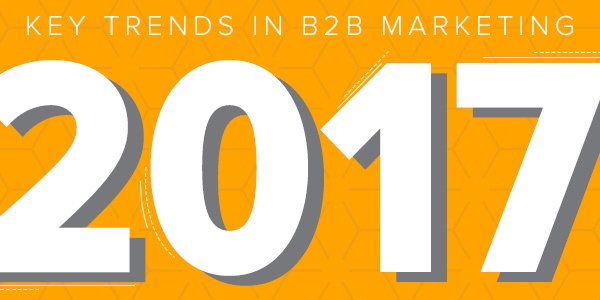
Everyone knows what happens to New Year’s resolutions by the end of January. Personal commitments like sticking to an exercise program or learning a new language may or may not remain in effect as the days unfold. And their staying power could depend on the return on investment you’re beginning to see.
With that reality in mind, we think some of the best business-related resolutions to make center around emerging marketing tools and technologies that are new to the territory and rising in their ranks. By adopting these strategies early, before the competition, you’re likely to see a stronger return and have fun at the same time.
According Forbes, there are many advantages for businesses that adopt new technologies and trends. Two of them include greater organizational agility and the ability to act quickly. With these thoughts in mind, we’ve explored some of the latest marketing approaches and have identified several worth implementing in 2017.
1. Remote Eye-Tracking
Have you ever wondered which aspects of your web site or content are engaging your visitors, what’s catching their eye, and what’s keeping their attention? You can do this with eye-tracking.
Eye-tracking has been around for a long time (the 1800s to be more precise), and used to mean hooking a user up to a camera and watching his or her eye movements as the person interacted with a screen. At one time, the process cost thousands of dollars. With recent advances in technology, this process has become easier and more affordable.
Remote eye tracking software uses the viewer’s built-in or connected computer camera to track that person’s eye movements and create a visual map showing where the user’s gaze is focused. The resulting report allows marketers to improve user experiences.
2. Mobile User Research
With mobile devices rapidly becoming the dominant business communication platform, it’s important that every aspect of your web experience is optimized for mobile. This includes your website, eCommerce store and email, among other things.
As with remote eye-tracking, mobile research can help you understand how to create greater engagement through your mobile experience. This type of research is conducted remotely and analyzes how buyers use their mobile devices. Ideally, it indicates:
- Effective and ineffective mobile presentations
- Problem areas to address
- Clues on how to optimize mobile content
Using this data, you can then assess your current experience and make sure it is optimized going forward.
3. Advanced Social Media Advertising
Gaining organic traction with social media is becoming more difficult. It is certainly a pay-to-play world, making it important for B2B companies to optimize their social campaigns.
Social media boasts 2.3 billion active users, and connecting with these audiences is imperative for marketers. Sure, posting to social media platforms is still free, but organic reach on social networks has declined significantly for the past couple of years. Brands will have to pay to display their content to their target audiences. While advertising tools are specific to each platform and vary in their capabilities and reach, they all offer advanced segmentation based on demographics, statuses and interests.
4. Multimedia Blogging
Have you ever watched a Tasty video and thought to yourself, “That looks easy enough, I can do that.” I know I certainly have. This is the power of video and multimedia blogging. These well-made, branded videos engage viewers—particularly Millennial-generation viewers—on a different level than plain text.
Using video is an especially effective way for brands to position themselves as experts. The videos can be brief product introductions or longer step-by-step how-to videos. By showing key audiences how to use products through video, manufacturers can increase trust and loyalty by educating buyers.
5. Wearable Technology as a Content Medium
With smartwatches rising in popularity, marketers will want to adopt creative and optimized ways to implement these devices. The fact is, marketers will find increased brand engagement by integrating content with wearable technology.
For example, wearable technology allows building products manufacturers to become entrenched at the job site itself. Using mediums like the Apple Watch, brands can send promotional offers, delivery notifications and hands-free, step-by-step interactive instructions.
In this day and age where more of your prospects are connected, taking advantage of wearable technology to deliver content can have huge benefits for brands and help them stay top-of-mind with buyers.
6. Sales Enablement through Marketing Automation
Having trouble providing your sales team with highly qualified leads? Want to know more about your site visitors? The answer might be investing in marketing automation software and, more specifically, sales enablement tools provided through marketing automation.
Using a marketing automation platform like HubSpot, brands are able to collect and store information, such as:
- Demographics about each lead
- Clues on the lead’s pain points
- Interest areas specific to each lead
Armed with this information, sales and marketing teams will know more about their leads and buyers, allowing them to create richer and more personalized buyer engagement.
7. Marketing Automation Plus eCommerce
Not only can marketing automation better enable your sales team, but it also can engage buyers throughout the buying cycle. By integrating marketing automation with eCommerce tools, brands have the ability to:
- Send automated reminder emails for “abandoned cart” items
- Manage purchase dates and send reminder emails for repeat purchase items
- Suggest missing items that would help complete building projects based on past history and cart activity
By closing the loop on their eCommerce experience and focusing that experience on the customer, brands have the potential to increase sales significantly.
As your 2017 continues to unfold, give some thought to how emerging marketing technologies like these could lead to transformative growth in your organization. Which is a resolution you’ll want to keep.
Interested in more details on how to put these tools to work for you to engineer demand? We’re happy to help. Please contact us for details or to request a consultation.